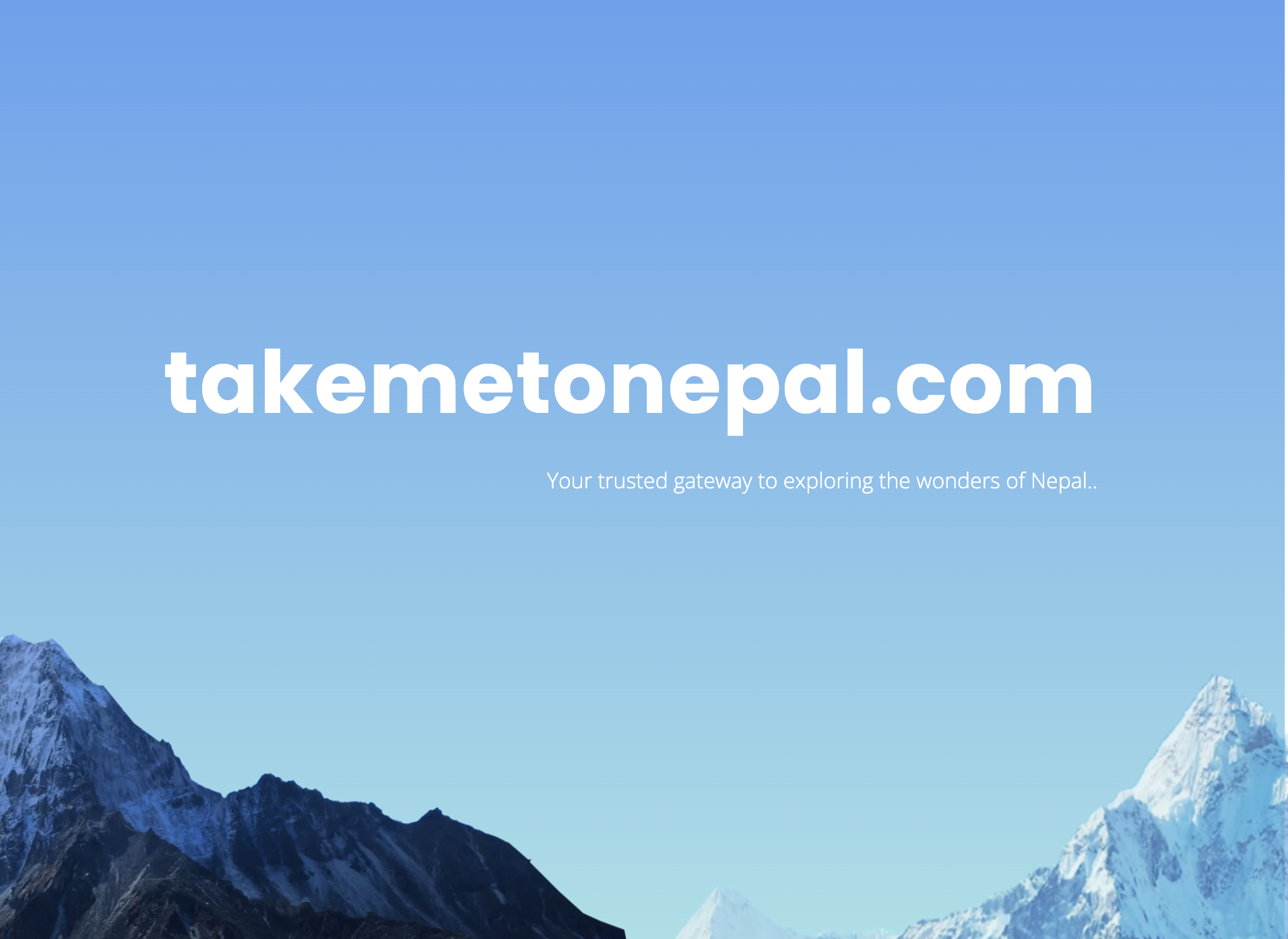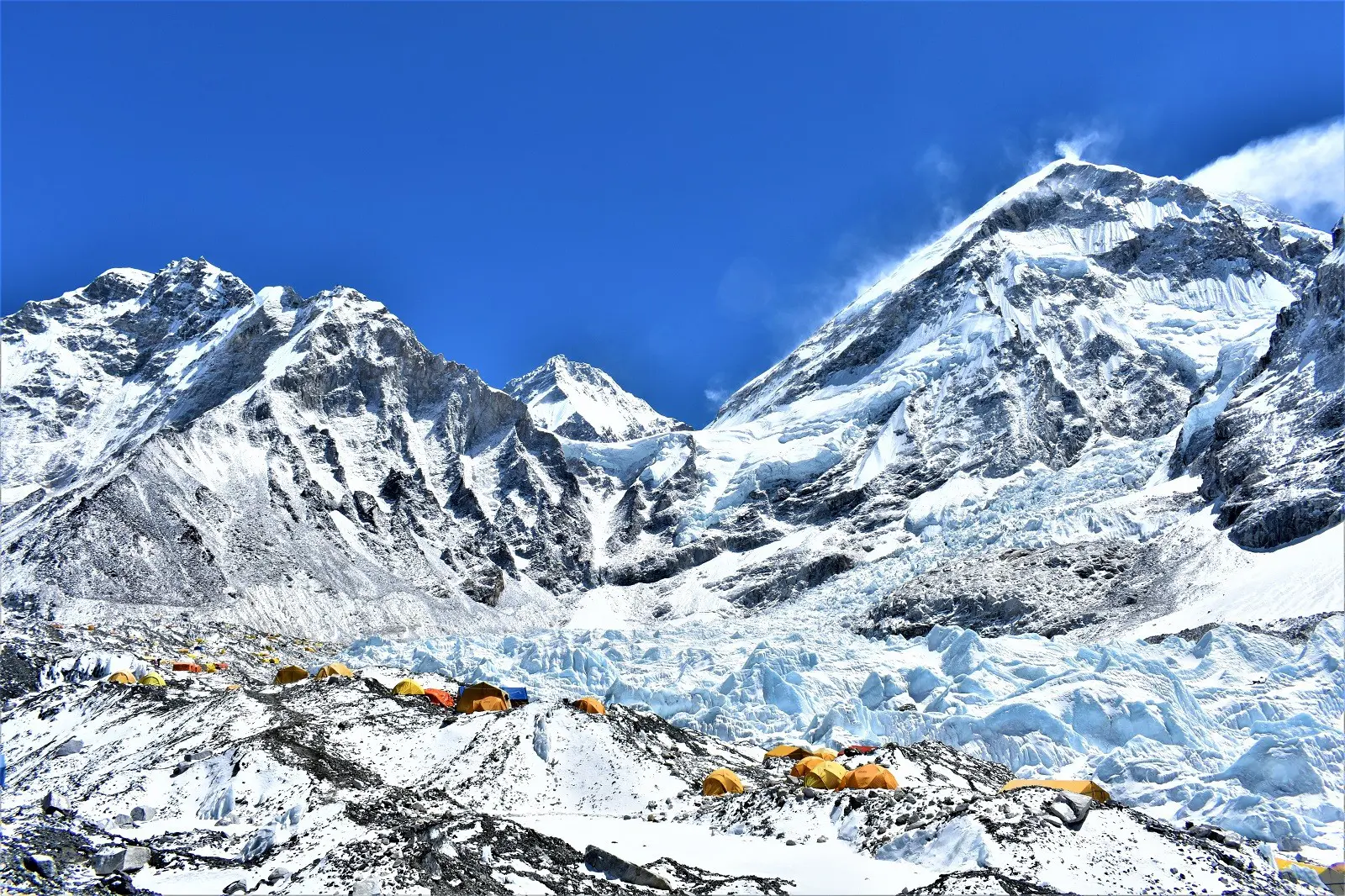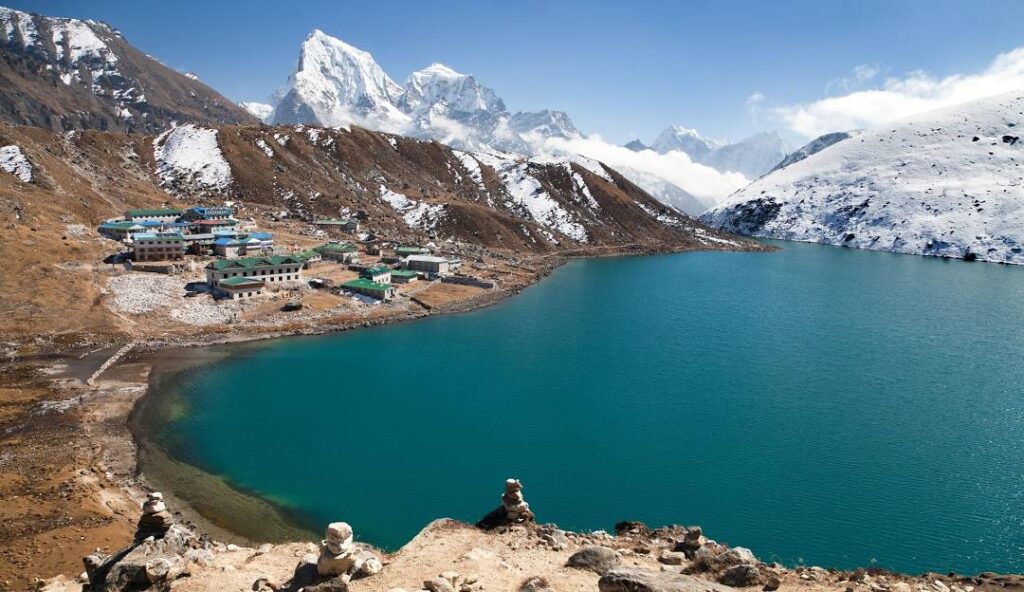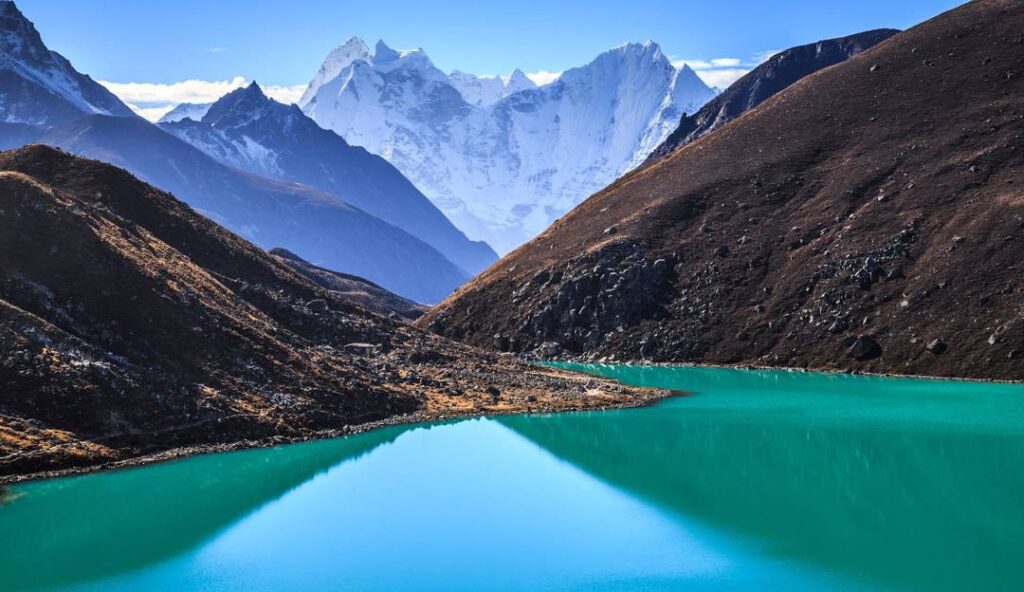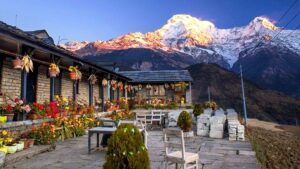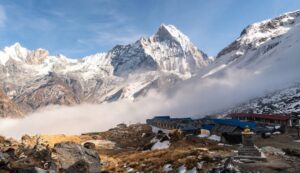Everest Base Camp Trek
A Journey to the Roof of the World

Location
Everest Base Camp Trek is located in the Solu-Khumbu region of Nepal, within the Sagarmatha National Park, which is home to the world’s highest peak, Mount Everest (8,848.86 meters).
Best Time to Visit
The best time to trek to Everest Base Camp is during the spring (March-May) and autumn (September-November) seasons when the weather is mild, and the skies are clear.

Duration
The trek typically takes 12-16 days, depending on the route, acclimatization process, and trekking pace.

Difficulty Level
Moderate to difficult. The trek involves steep ascents, high altitudes, and long days of walking, making it more challenging for beginners.

Elevation
The highest point on the trek is Everest Base Camp, which lies at 5,364 meters (17,598 feet).
Experiences for You
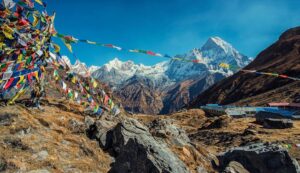
16 Days Everest Base Camp Trek
16 Days Everest Base Camp Trek Location Best Time to Visit Duration Difficulty Level Elevation Overview The 16-day Everest Base Camp Trek is a legendary...
ExploreOverview
Everest Base Camp Trek is one of the most iconic and popular treks in the world, drawing thousands of trekkers every year to the foothills of Mount Everest.
This epic adventure takes you through Sherpa villages, Buddhist monasteries, lush valleys, and breathtaking mountain vistas, ultimately leading to Everest Base Camp itself while offering an incredible opportunity to witness the grandeur of the world’s highest peak, experience Sherpa culture, and explore the rugged Himalayan landscapes.
This trek is suitable for trekkers with moderate to good fitness levels and is often undertaken by those seeking the ultimate trekking experience in Nepal. While the trek offers incredible natural beauty and the thrill of being at the foot of Everest, it also challenges trekkers with the altitude and long, strenuous days.
The Everest Base Camp Trek takes you through the Sagarmatha National Park, a UNESCO World Heritage Site, and provides incredible views of Mount Everest, as well as surrounding peaks such as Lhotse, Makalu, and Cho Oyu.
The trek starts in Lukla, following a well-trodden path through picturesque villages, green forests, and alpine meadows, all while being surrounded by snow-capped peaks.
Along the way, trekkers will pass through famous Sherpa villages like Namche Bazaar, Tengboche, and Dingboche, all of which offer unique cultural experiences and panoramic views.




Weather and Climate
The weather along the Everest Base Camp trek varies significantly depending on altitude, time of year, and location.
- Lower altitudes (2,600m-3,500m): Temperatures range from 15°C during the day and drop to 0-5°C at night.
- Everest Base Camp (5,364m): During the day, temperatures can vary between -5°C to 5°C, with much colder temperatures at night that can plummet below -10°C, particularly in the winter months.
- Spring (March-May): Ideal trekking conditions with clear skies, mild temperatures, and blooming rhododendrons.
- Autumn (September-November): Another excellent season with clear skies, stable weather, and beautiful views of the mountains.
- Summer (June-August): Not ideal due to heavy monsoon rains and potential landslides.
- Winter (December-February): Cold temperatures and possible snowfall, making trekking difficult due to extreme weather conditions.
Geological Information
The Everest region is part of the Mahalangur mountain range in the central Himalayas and is often characterized by dramatic landscapes, including glaciers, alpine meadows, rocky ridges, and steep mountain valleys.
Mount Everest is a tectonic collision of the Indian and Eurasian plates, which has given rise to the Himalayan mountain range.
The trek takes trekkers through glaciers like the Khumbu Glacier, deep valleys, and rugged ridgelines.
The geological history of the region is evidenced by the varied rock formations and rugged terrain that surround Everest and its neighboring peaks.
Flora and Fauna
The Everest Base Camp Trek passes through diverse ecosystems, each supporting different species of flora and fauna. The flora changes as you ascend through the different altitudes, with lower regions covered in lush forests of pine, rhododendron, and oak, while higher altitudes feature alpine meadows and sparse vegetation.
- Flora: In the lower regions, you’ll encounter dense forests of oak and rhododendron, as well as terraced fields and wildflowers in the spring. Higher up, you’ll find alpine shrubs, juniper, and mosses.
- Fauna: The region is home to a variety of wildlife, including the endangered snow leopard, Himalayan tahr, and musk deer. There are also several species of pheasants, Himalayan vultures, and the elusive red panda, although spotting these animals requires great luck.
History and Culture
The Everest Base Camp Trek is rich in history and culture. The trek takes you through Sherpa villages, each with its own unique culture and traditions.
Sherpas are known for their exceptional mountaineering skills and resilience in high-altitude environments, and their hospitality is legendary.
Along the route, trekkers will see Buddhist monasteries, stupas, and prayer flags, which are important cultural landmarks for the Sherpas.
The famous Tengboche Monastery, perched on a hill with a stunning backdrop of Everest, is a cultural highlight of the trek.
The region is also home to the Sagarmatha National Park, a UNESCO World Heritage Site that protects the diverse ecosystems and cultural heritage of the area.
People and Customs
The Sherpa people, who live in the Everest region, are the heart and soul of the trek. They are known for their strength and ability to adapt to the high-altitude environment, and many Sherpas work as guides and porters on trekking expeditions.
Their culture is rooted in Tibetan Buddhism, and you’ll see many signs of this culture along the trek, including monasteries, stupas, and prayer wheels.
The Sherpas are warm and welcoming, often offering trekkers tea or snacks as they pass through villages.
The trekkers also have the chance to experience traditional Sherpa festivals and rituals, which offer a glimpse into their way of life.
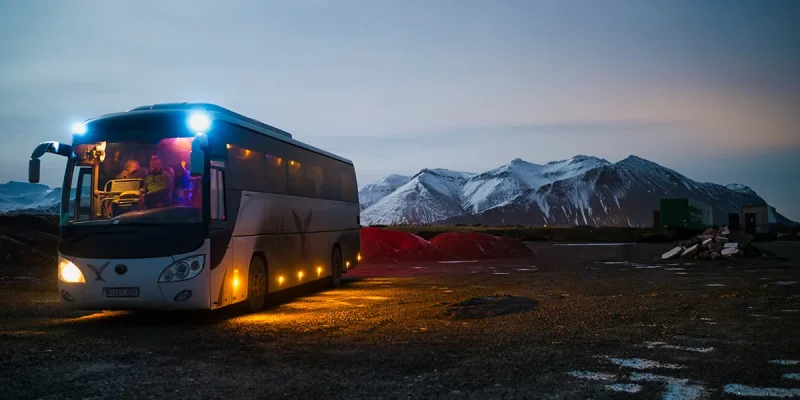
Transportation Information
- How to Reach: The trek begins with a flight from Kathmandu to Lukla, which is considered one of the most thrilling and challenging airports in the world. From Lukla, trekkers begin their journey toward Everest Base Camp.
- Local Transportation: From Lukla, trekkers travel on foot through the villages, valleys, and forests toward Everest Base Camp. The trail is well-marked and there are opportunities to rest at teahouses along the way.
- Trekking Route: The typical route follows Lukla -> Phakding -> Namche Bazaar -> Tengboche -> Dingboche -> Lobuche -> Gorak Shep -> Everest Base Camp -> Kalapathar (optional) -> Return.
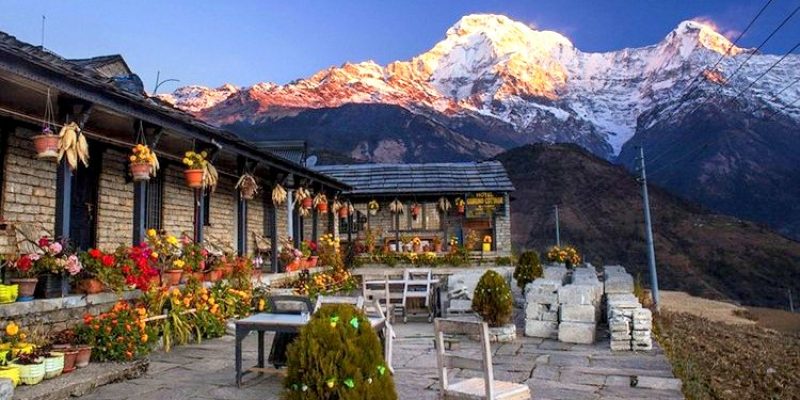
Accommodations
The Everest Base Camp Trek offers a variety of accommodation options, ranging from basic teahouses to more comfortable lodges, depending on the location and availability.
- Price Range: Accommodation costs around NPR 500-1,500 per night depending on the location and season.
- Facilities: Rooms are usually basic, with a bed and a shared bathroom. Some places may offer hot showers for an additional fee, though hot water is not always available at higher altitudes.
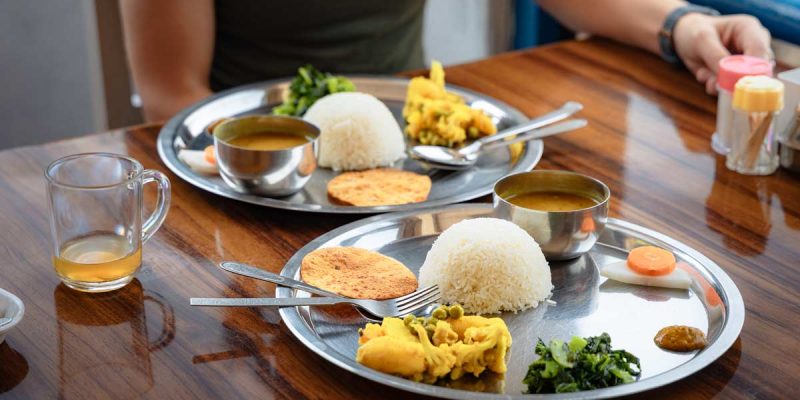
Dining and Cuisine
The food on the Everest Base Camp Trek consists mainly of basic Nepalese and Tibetan meals, which are designed to provide plenty of energy for trekkers.
- Typical Meals: Dal Bhat (lentil soup with rice), momo (dumplings), fried rice, noodles, thukpa (noodle soup), and sherpa stew.
- Snacks and Drinks: Tea, coffee, energy bars, and chocolates are available at teahouses. At higher altitudes, it’s important to stay hydrated and fuel your body with high-energy snacks.
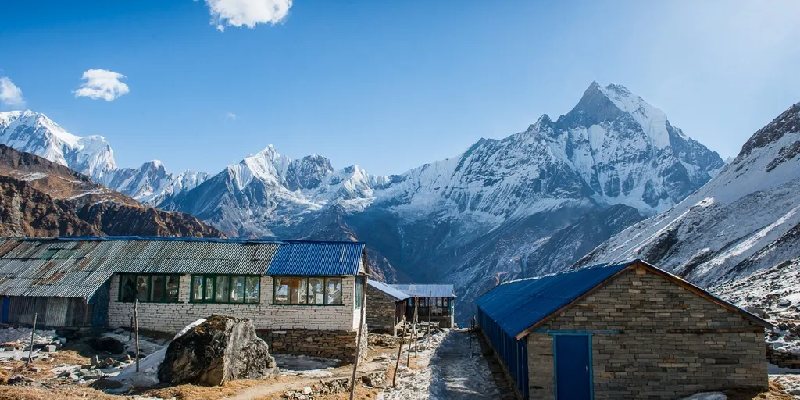
Permits and Entry Requirements
- Sagarmatha National Park Permit: NPR 3,000 (approx.)
- TIMS Card (Trekkers’ Information Management System): NPR 1,000 (approx.)
Permits can be obtained in Kathmandu before the trek or in Monjo (the park entrance).
Safety Information:
- Altitude Sickness: Acclimatization is crucial to prevent altitude sickness. Rest days and gradual ascents are built into the itinerary to help your body adjust to the altitude.
- Medical Facilities: Basic medical facilities are available at major stops like Namche Bazaar and Dingboche. For serious issues, evacuation to Kathmandu may be required.
- Vaccinations: Make sure to have necessary vaccinations, such as for hepatitis A, hepatitis B, typhoid, and tetanus, before the trek.
Gear and Packing Lists
- Essentials: Trekking boots, windproof jacket, layers of clothing for cold weather, sleeping bag, hat, gloves, sunscreen, and sunglasses.
- Altitude Gear: A warm jacket, trekking poles, headlamp, water purifier, and extra batteries for electronic devices.
- Extras: Camera, power bank, and a notebook.
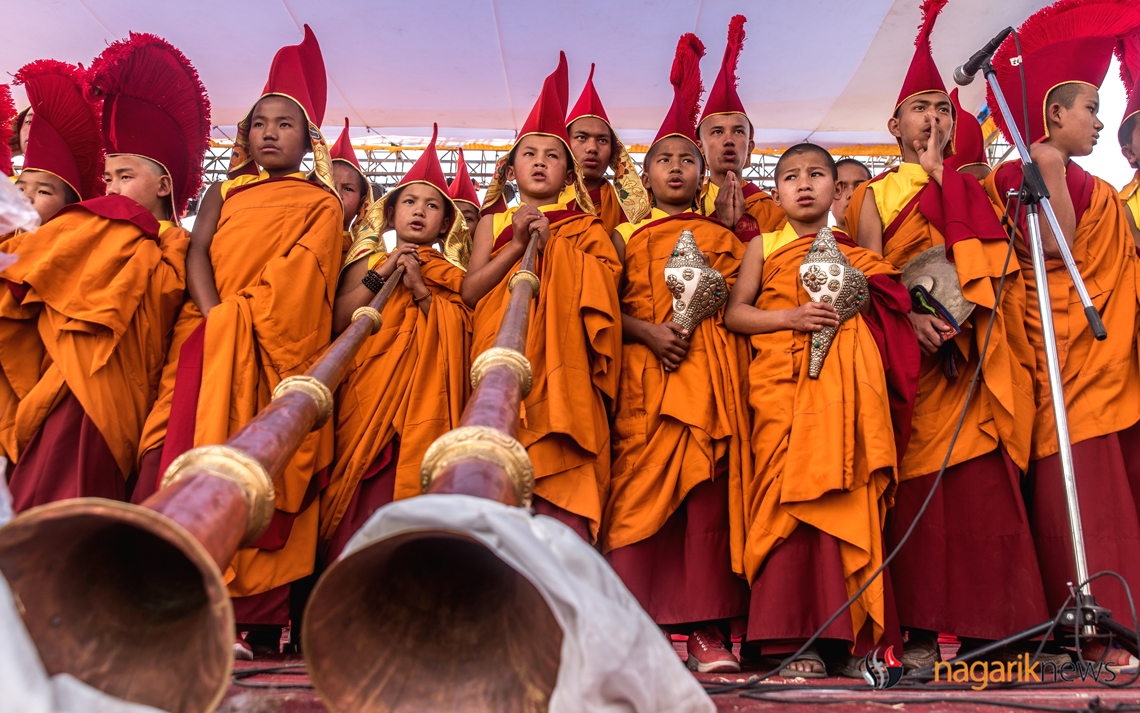
Local Festivals and Events
- Lhosar (Sherpa New Year): A major festival celebrated by the Sherpa people with music, dance, and traditional rituals.
- Buddha Jayanti: A Buddhist festival celebrated in the region to honor Lord Buddha’s birth.
Lets Plan A Trip
